 W
WThe One chip MSX, or 1chipMSX as the D4 Enterprise distributional name for the ESE MSX System 3, is a re-implementation of an MSX-2 home computer that uses a single FPGA to implement all the electronics of an MSX-2, including the MSX-MUSIC and SCC+ audio extensions.
 W
WMSX is a standardized home computer architecture, announced by Microsoft and ASCII Corporation on June 16, 1983. It was initially conceived by Microsoft as a product for the Eastern sector, and jointly marketed by Kazuhiko Nishi, then vice-president at Microsoft and director at ASCII Corporation. Microsoft and Nishi conceived the project as an attempt to create unified standards among various home computing system manufacturers of the period, in the same fashion as the VHS standard for home video tape machines.
 W
WASCII Corporation was a Japanese publishing company based in Chiyoda, Tokyo. It became a subsidiary of Kadokawa Group Holdings in 2004, and merged with another Kadokawa subsidiary MediaWorks on April 1, 2008, and became ASCII Media Works. The company published Monthly ASCII as the main publication. ASCII is best known for creating the Derby Stallion video game series, the MSX computer, and the RPG Maker line of programming software.
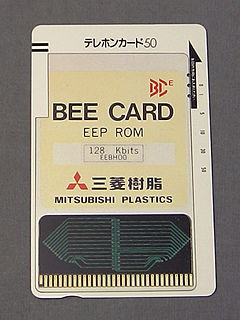 W
WA Bee Card is a ROM cartridge developed by Hudson Soft as a software distribution medium for MSX computers. Bee Cards are approximately the size of a credit card, but thicker. Compared to most game cartridges, the Bee Card is small and compact. Because of the card's size, Atari Corporation also adopted it for the Atari Portfolio, a handheld PC released in 1989. It was also used by some Korg Synthesizers and workstations as external storage of user content like sound programs or song data.
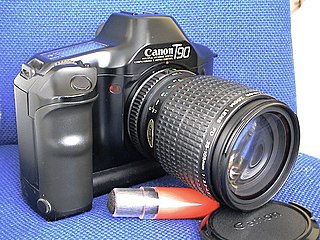 W
WThe Canon T90, introduced in 1986, was the top of the line in Canon's T series of 35 mm Single-lens reflex (SLR) cameras. It is the last professional-level manual-focus camera from Canon, and the last professional camera to use the Canon FD lens mount. Although it was overtaken by the autofocus revolution and Canon's new, incompatible EOS after only a year in production, the T90 pioneered many concepts seen in high-end Canon cameras up to the present day, particularly the user interface, industrial design, and the high level of automation.
 W
WThe Canon V-20 was a MSX microcomputer made by the Japanese corporation Canon. It had an innovative digital camera interface (T-90/DMB-90) to use with the Canon T90.
 W
WThe Dragon MSX MSX 1 home computer was designed by Radofin for Eurohard, which were known for their Dragon 200 home computer, a clone of the TRS-80 Color Computer.
 W
WThe Panasonic FS-A1WSX released in 1989 was the last MSX2+ made by Panasonic. It was the successor of FS-A1WX and incorporated few changes like S-Video output, no tape support, color printer support and an improved A1 Internal Cockpit software with a Kanji color word processor.
 W
WThe AY-3-8910 is a 3-voice programmable sound generator (PSG) designed by General Instrument in 1978, initially for use with their 16-bit CP1610 or one of the PIC1650 series of 8-bit microcomputers. The AY-3-8910 and its variants were used in many arcade games—Konami's Gyruss contains five—and pinball machines as well as being the sound chip in the Intellivision and Vectrex video game consoles, and the Amstrad CPC, Oric-1, Colour Genie, Elektor TV Games Computer, MSX, and later ZX Spectrum home computers. It was also used in the Mockingboard and Cricket sound cards for the Apple II and the Speech/Sound Cartridge for the TRS-80 Color Computer.
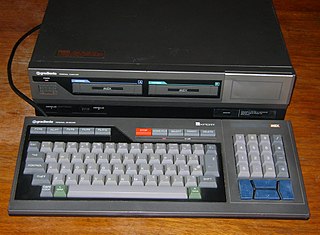 W
WThe Expert, made by Gradiente Eletrônica was the second and last MSX home computer launched in the Brazilian market, in the mid-1980s.
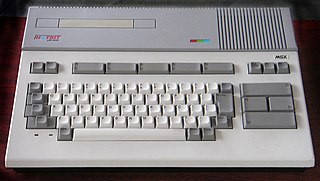 W
WThe Hotbit HB-8000 is an MSX home computer developed and sold by the Brazilian subsidiary of Sharp Corporation through its EPCOM home computer division in mid-1980s. The MSX machines were very popular in Brazil at the time, and they virtually killed all the other competing 8 bit microcomputers in the Brazilian market.
 W
WThe Game Master is a utility cartridge released by Konami on December 12, 1985. It is meant to be used in conjunction with Konami's own MSX game cartridges, allowing users to select their stages, adjust the number of lives, save progress and high scores, make screen dumps, and play in slow motion, among other uses.
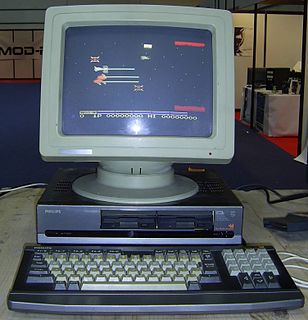 W
WThe Philips NMS-8250, was a professional MSX 2 home computer for the high end market, with two built in floppy disk drives in a "pizza box" configuration. The machine was in fact manufactured by Sanyo and it is basically the MPC-25FS with a different color.
 W
WThe Philips NMS-1205 was a MSX AUDIO cartridge using Yamaha Y8950 chip . NMS-1205 was only sold in Europe for MSX Personal Computer.
 W
WThe VG 8020 was Philips' third MSX 1 computer, after the VG8000 and the VG8010 computers.
 W
WThe R800 is the central processing unit used in the MSX Turbo-R home computer. The R800 was designed by ASCII Corporation of Japan and built by Mitsui & Co., Ltd.. The goal was a modern and pipelined CPU binary compatible with the Z80, and therefore with MSX software, while also maintaining compatibility with older MSX Z80-based hardware.
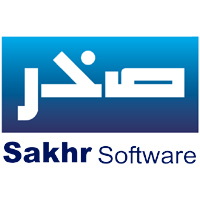 W
WSakhr Software Company is an Arabic language technology company based in Kuwait. It deals with products for the Middle East in e-governance, education, wireless, and security.
 W
WThe SV-328 is an 8-bit home computer introduced by Spectravideo in June 1983. It was the business-targeted model of the Spectravideo range, sporting a rather crowded full-travel keyboard with numeric keypad. It had 80 KB RAM, a respectable amount for its time. Other than the keyboard and RAM, this machine was identical to its little brother, the SV-318.
 W
WThe SVI-728 is the first home computer from Spectravideo that complied fully with the MSX home computer specification. It was introduced in 1985. The design is virtually identical to that of the earlier SV-328, which did not comply fully with the MSX standard.
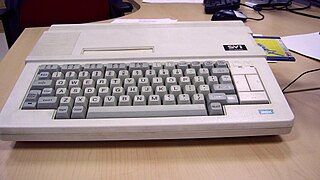 W
WThe Spectravideo SVI-738 X'Press is an MSX1 compatible home computer manufactured by Spectravideo from 1985. Although compatible with the MSX 1.0 standard, it incorporates several extensions to the standard ; many are hardware-compatible with the MSX 2.0 standard but the system as a whole is not, leading to it being referred to as an "MSX 1.5" computer.
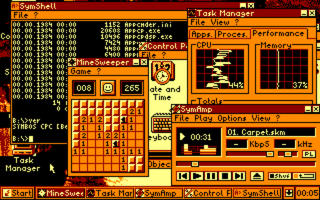 W
WSYmbiosis Multitasking Based Operating System (SymbOS) is a multitasking operating system for Zilog Z80-based 8-bit computer systems.
 W
WThe TMS9918 is a Video Display Controller (VDC) manufactured by Texas Instruments, introduced in 1979. The TMS9918 and its variants were used in the ColecoVision and CreatiVision, Memotech MTX, MSX, SG-1000/SC-3000, Spectravideo, Sord M5, Tatung Einstein, Texas Instruments TI-99/4, Casio PV-2000, and Tomy Tutor.
 W
WYamaha CX5M is an MSX-system compatible computer that expands upon the normal features expected from these systems with a built-in eight-voice FM synthesizer module, introduced in 1984 by Yamaha Corporation.
 W
WThe Yamaha V9938 is a video display processor (VDP) used on the MSX2 home computer, as well as on the Geneve 9640 enhanced TI-99/4A clone. It was also used in a few MSX1 computers, in a configuration with 16kB VRAM.
 W
WThe Yamaha V9958 is a Video Display Processor used in the MSX2+ and MSX turbo R series of home computers and the "TIM" upgrade to the TI-99/4A. Also known as the MSX-Video chip, it is the successor to the Yamaha V9938. The main new features are three graphical YJK modes with up to 19268 colours and horizontal scrolling registers. The V9958 was not as widely adopted as the V9938.
 W
WThe YM2413, a.k.a. OPLL, is a cost-reduced FM synthesis sound chip manufactured by Yamaha Corporation and based on their YM3812 (OPL2). To make the chip cheaper to manufacture, many of the internal registers were removed. The result of this is that the YM2413 can only play one user-defined instrument at a time; the other 15 instrument settings are hard-coded and cannot be altered by the user. There were other cost-cutting modifications: the number of waveforms was reduced to two, and the channels are not mixed using an adder; instead, the chip's DAC uses time-division multiplexing to play short segments of each channel in sequence, as also done in the YM2612.